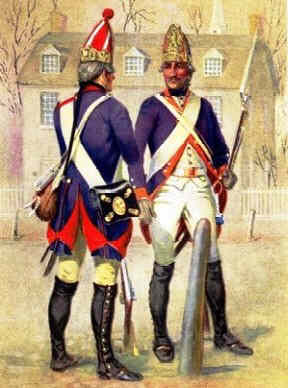
Charles Lord Cornwallis next action would occur in April of that year, when he defeated Brig. Gen. Benjamin Lincoln’s men in a small skirmish at Bound Brook that he and his supporters blew out of proportion in their reports. The Hessian soldiers, made up about a quarter of the British fighting force in America. 1,000 Hessian soldiers were captured as prisoners at the Battle of Trenton.
Map by Johann Ewald depicting the Bound Brook area and
the plan of attack. New Brunswick is at the bottom, and the Bound Brook outpost
at the center. British movements are drawn in red.
General Benjamin Lincoln, portrait by Charles
Willson Peale
Cornwallis, 1792 portrait by John Smart
Gen Benjamin Lincoln avoided an American Trenton by leading
500 men out of an attack by 4000 Hessian Jaegers against his outlying camp. The
Americans reoccupied the New Jersey post before Washington withdrew them.
While Sir William Howe’s and George Washington’s armies were
still in winter quarters, much of northern New Jersey became a no-man’s-land.
Each side sent patrols and foraging parties into the area and sought to ambush
the other side’s parties. On one such occasion a British foraging expedition
(built up to nearly eight thousand men) swept the area around Brunswick. While
there it also attempted to cut off the American outpost at Bound Brook, seven
miles up the Raritan. Charles Lord Cornwallis led a task force estimated at two
thousand British and Germans that moved at night against Major General Benjamin
Lincoln’s camp. Total American strength was probably about five hundred men,
mostly from the Eighth Pennsylvania and supported by three three-pounders from
Proctor’s artillery regiment (a state unit until becoming Continental in June)
and some militia.
Cornwallis’ decision to launch the four-column attack at
daybreak caught American Major General Benjamin Lincoln and the Continental
Army completely by surprise; they were unable to launch a counterattack.
Surprised and outnumbered, Lincoln ordered his men to retreat and was able to
escape along with most of his 500 troops; his losses totaled 60 men killed or
taken prisoner. The British also captured several cannons and nearly all of
Lincoln’s artillery detachment, which they took with them, returning to their
camp at New Brunswick.
Hessian mercenaries were critical to the British victory.
Hessian Johann Ewald, captain of the elite Lieb Jaeger Korps, developed the
successful four-column strategy at Cornwallis’ request; his diary is the major
source of information regarding the ensuing battle. Ewald was so respected by
his colonial counterparts that General Henry Knox invited Ewald to West Point
after Cornwallis’ surrender at Yorktown. Ewald would eventually publish eight
books on military strategy, including a Treatise on Partisan Warfare, published
in 1785, which earned the praise of Prussia’s Frederick the Great.
Although surprised, Lincoln extricated most of his force,
but enemy light horse captured the guns. Cornwallis withdrew before Greene
arrived with reinforcements.
Knox estimated that the Americans lost six killed and twenty
or thirty captured. The British do not appear to have lost anyone. While some
suspected that a neighborhood farmer learned the password and gave it to the
British, the primary blame for the surprise was put on the militia, which were
supposed to be guarding the Raritan, which was fordable at almost every point.
Lincoln and his men were considered to have acquitted themselves well. The
incident prompted Washington to reduce the number and size of his outposts. Not
only was this an effort to prevent further surprise attacks, but it also
contributed to Washington’s massing of forces to better counter the anticipated
British offensive.